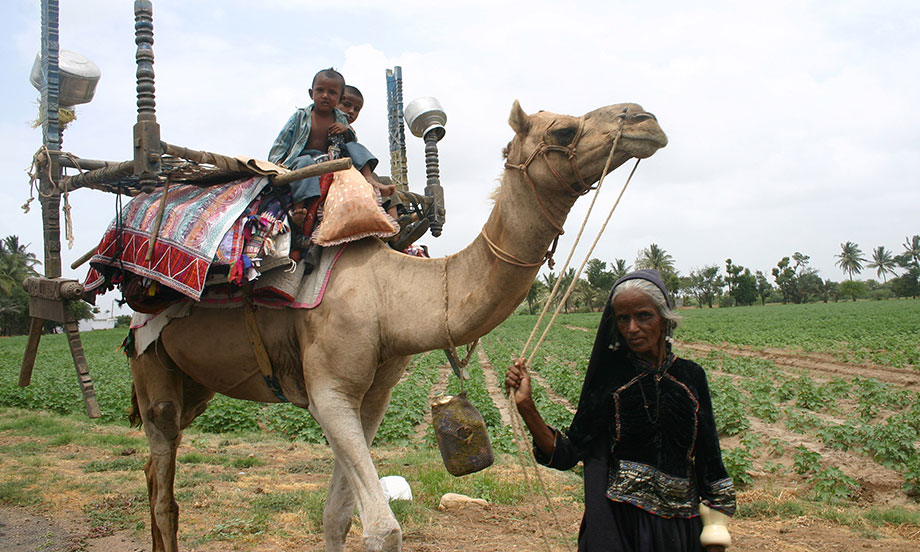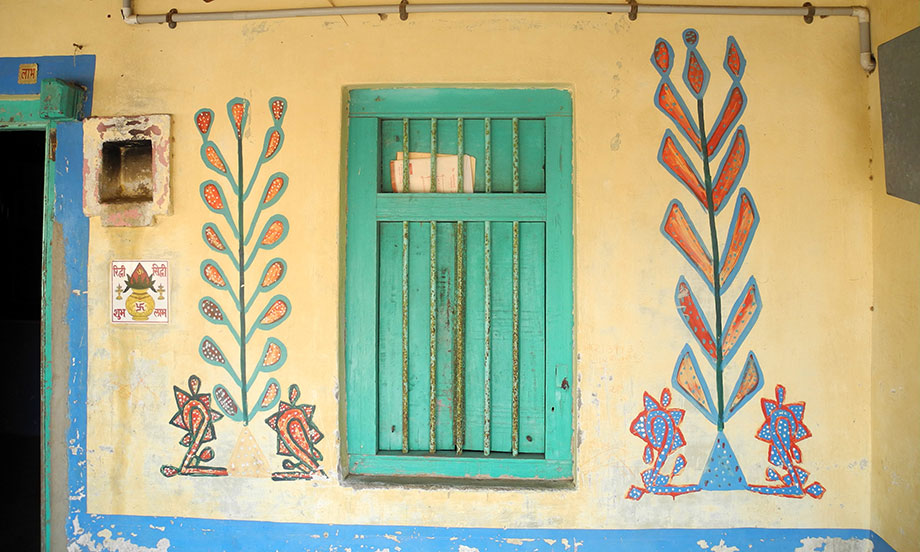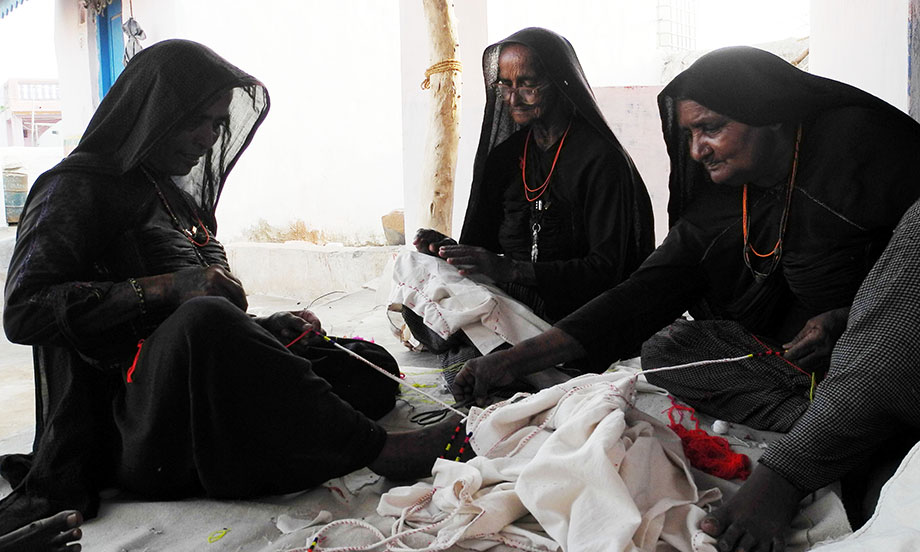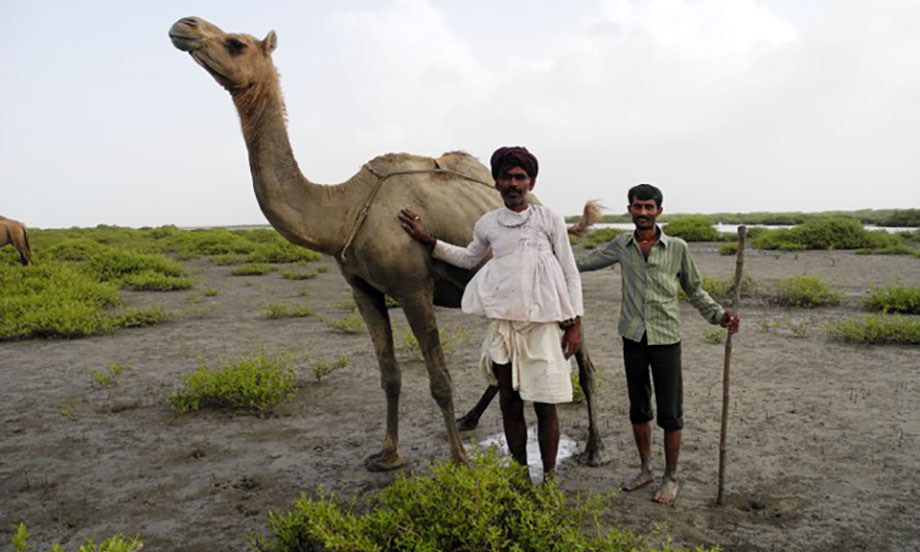Rabari
Katy West
The Rabari are an indigenous tribe of herders and shepherds that live throughout northwest India. Meaning ‘Outsiders’ they traditionally follow a highly nomadic way of life. As India has changed, so too has general tolerance to nomadic groups, who relied in the past on ancestral grazing rights and ancient rights-of-way.
The Rabari women are renowned for their detailed embroidery in graphic motifs, outlined in black, highlighting significant events, rites and values in their lives. It is these distinct designs with parrots, flowers and other motifs that we see copied in so many Turkey red samples. Unmarried women embroider blouses, skirts, veils and dowry sacks. Married women embroider children’s clothing, animal trappings and household items.
Traditional veils would be made from the wool of ones own sheep, carded and spun before being handed to the weaver. The weaver would ensure that he used only the wool given to him, and would pass it to the dyer who would perform a type of resist dyeing. Once the veil was complete, the women start to embroider using a variety of coloured threads and tiny cut mirrors.
After the Gujarat Earthquake in 2001, old bonds between landowners, sheepherders, weavers, dyers and the Rabari women began to break down. Many people were made homeless for long periods of time and the making of veils was put aside. At some point the elders decided that the practice of embroidery was to be outlawed as too much time was being spent on the making of veils and not enough time generating income.
Judy Frater, an American Anthropologist, who had been working with the Rabari tribes since she encountered them on fieldwork in the 70’s, established the Somaiya Kala Vidya design school in 1993 with a mission to educate traditional artisans in design and business skills. The word ‘design’ does not exist in many Indian languages. The students receive a stipend, avoiding any resistance from their families. Frater’s aim has been to protect traditional skills by making them relevant in a global economy. Graduates of the school are producing contemporary version of embroidery and tie-dye as viable products and marketing them as far afield as Mumbai and Santa Fe.




